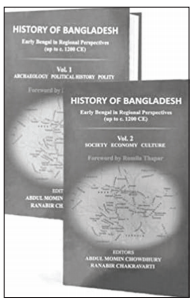Part of an encyclopaedic project on the history of an important region in the eastern part of the subcontinent, the volumes under consideration focus on the ancient and early medieval periods. The first and longer volume is more heterogenous, while the second is more sharply focused. Inevitably, given the scale of the project and the range of contributors, the volumes tend to be somewhat uneven, but will prove to be valuable for the information and insights that they provide.
The introduction offers the reader an entry point into the lay of the land, moving away from any notion of fixity or permanence. The many names used for the entire region, as well as for sub-regions, and their fluctuating frontiers, convey a sense of complex rather than closed histories. What is also refreshing is the way in which the easy and popular route of regional chauvinism, which often marks regional histories, is eschewed. What we have instead is a sense of diversity, of influences from all directions, and of interactions as well. This enables the editors and the contributors to at once recognize and move beyond present-day political boundaries of nation-states to weave a tapestry of the past emphasizing its dynamism.
A brief description of historical geography leads into a far more detailed discussion on archaeology. This section is informative. Some contributions provide overviews, summarizing what is known of archaeological cultures and settlement patterns. It is evident that much more remains to be explored, and much has been lost in a terrain that is drained by rivers that frequently change their courses, and is one of the most densely populated areas in the world.


Very fantastic information can be found on weblog.Raise range